One of the series of signs describing historical places in Paris. The signs were placed starting in 1992 and are also called sucettes Starck (Starck’s Lollipops) after Philippe Starck who designed them.
The sign depicts Salé House, a house built in 1656 for Lord Pierre Aubert, who was a salt tax collector, and hence the name of the house (the Salt House). The house where the Picasso Museum is located today is considered one of the most beautiful in the Marais district.
The house is designated as a French historical heritage site
The house was photographed on the same day
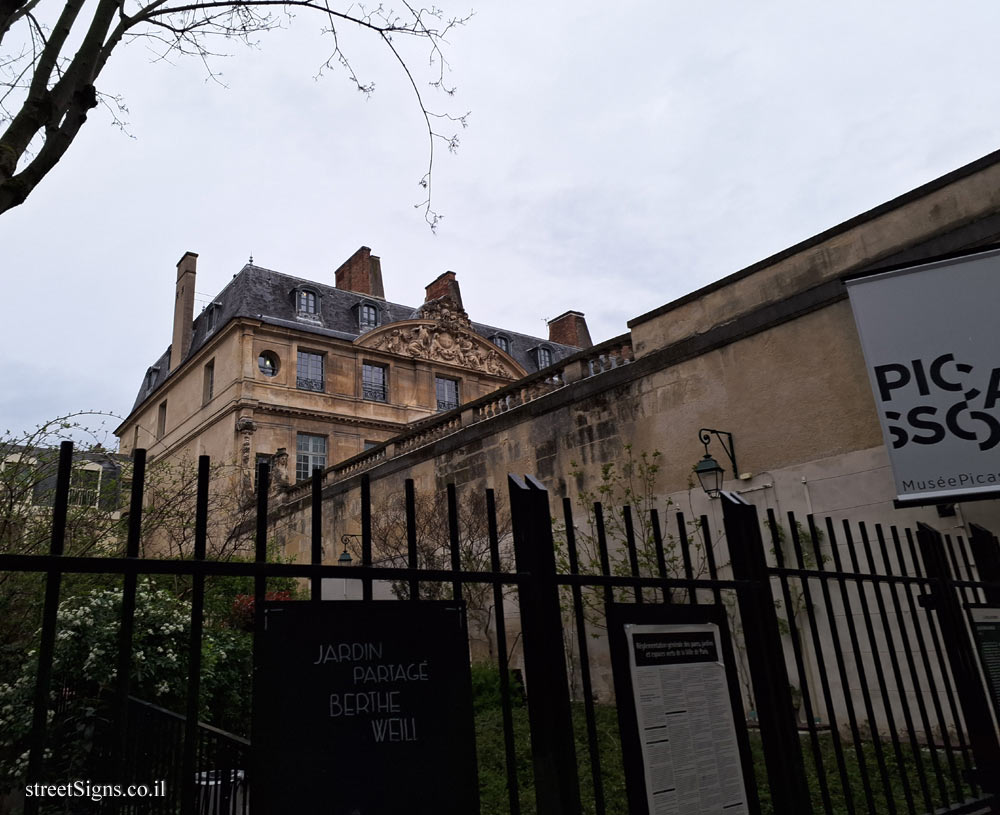 Click for a larger image
Click for a larger image 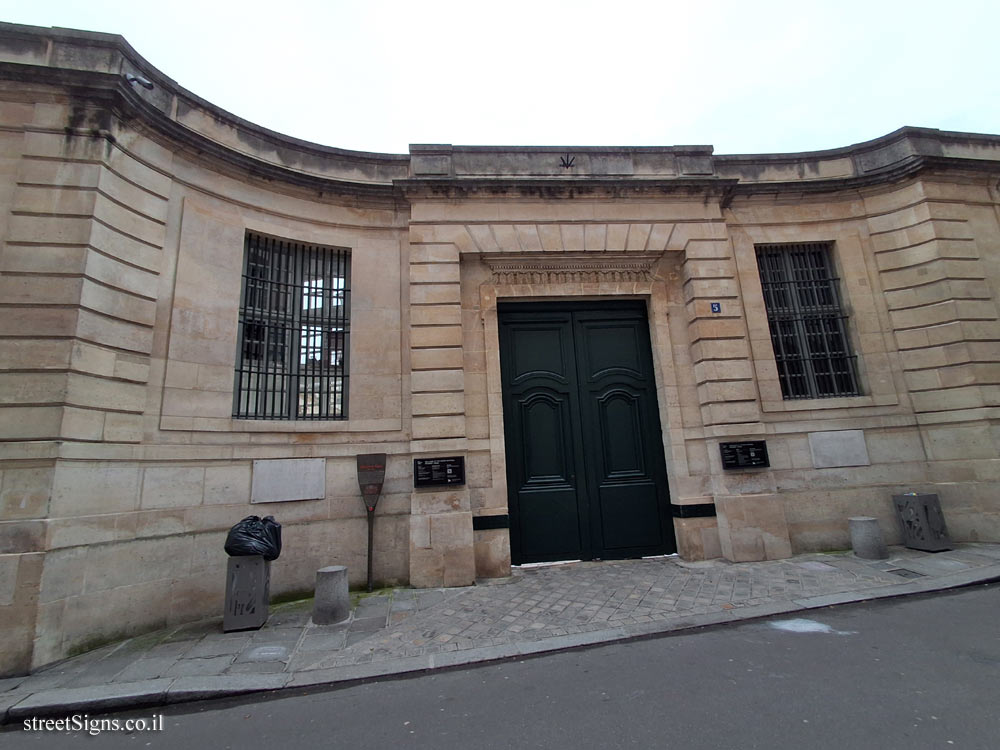 Click for a larger image
Click for a larger image On the entrance gate there is a sign indicating the fact that this is where the art school was
EN 1829
L’ECOLE CENTRALE DES ARTS ET MANUFACTURES
FUT FONDEE EN CET HÔTEL
PAR
LAVALLEE - J.B DUMAS
OLIVIER ET PECLET
ELLE Y DEMEURA J’USQU’EN 1884
1929
[translation]
IN 1829
THE CENTRAL SCHOOL OF ARTS AND MANUFACTURES
WAS FOUNDED IN THIS HOTEL
BY
LAVALLEE - J.B DUMAS
OLIVIER AND PECLET
SHE REMAINED THERE UNTIL 1884
1929
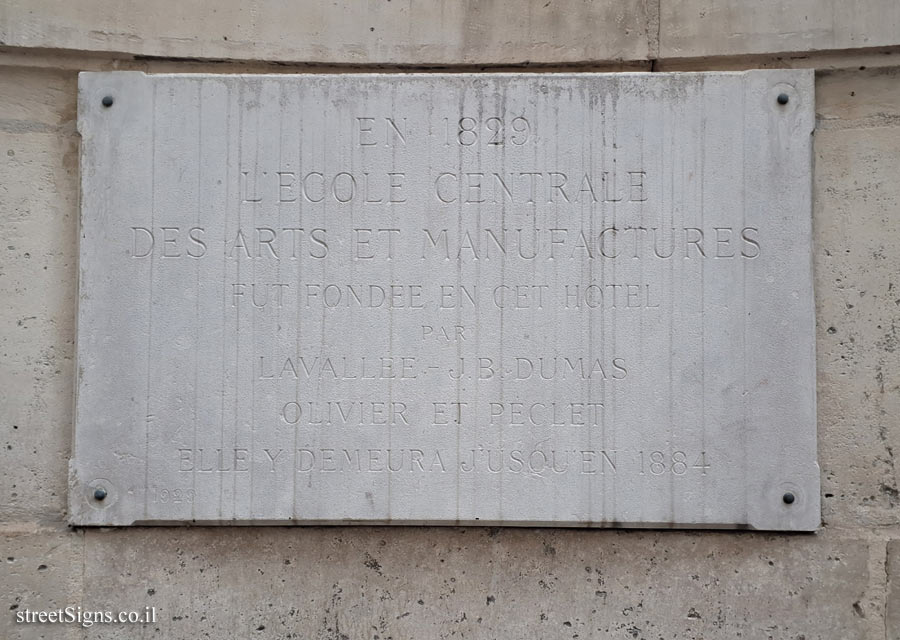 Click for a larger image
Click for a larger image The house illustration in the center of the sign is shown here at magnification
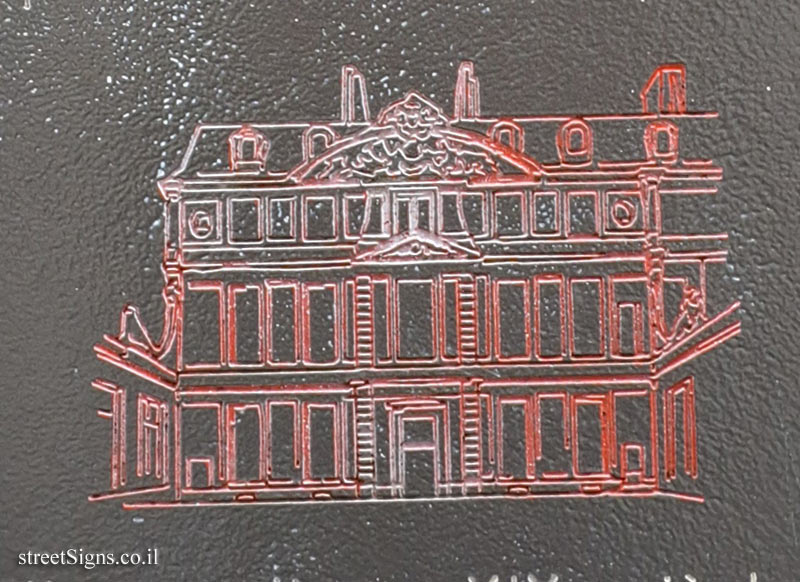 Click for a larger image Translation of the text on the sign
Click for a larger image Translation of the text on the sign:
[An illustration of a ship, symbolizing the symbol of Paris]
History of Paris Salé House Built by Boullier de Bourges, from 1656 to 1659, for Pierre Aubert de Fontenay, farmer of the gabelles, hence his nickname, it is the largest house in the Marais. A main building double in depth is shaped like a basket handle at the end of the main courtyard, and a half-moon around it: the gate on the rue de Thorigny facilitates the movement of carriages. But the fall of Superintendent Fouquet leads to the ruin of his owner; rented, the hotel is inhabited by Merosini, ambassador of Venice.
[Illustration of the Building]
In the 19th century it housed the Central School of Arts and Manufactures (from 1829 to 1884), then the School of Crafts from 1944 to 1969. Restored, it was transformed into a museum to receive the Picasso donation in 1985.

 Click for a larger image
Click for a larger image  Click for a larger image
Click for a larger image  Click for a larger image
Click for a larger image  Click for a larger image
Click for a larger image 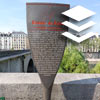 Click for all signs belonging to The History of Paris (Starck's Lollipops)
Click for all signs belonging to The History of Paris (Starck's Lollipops)
 156 Meter |
156 Meter |  161 Meter |
161 Meter |  165 Meter |
165 Meter |  166 Meter |
166 Meter |  170 Meter
170 Meter